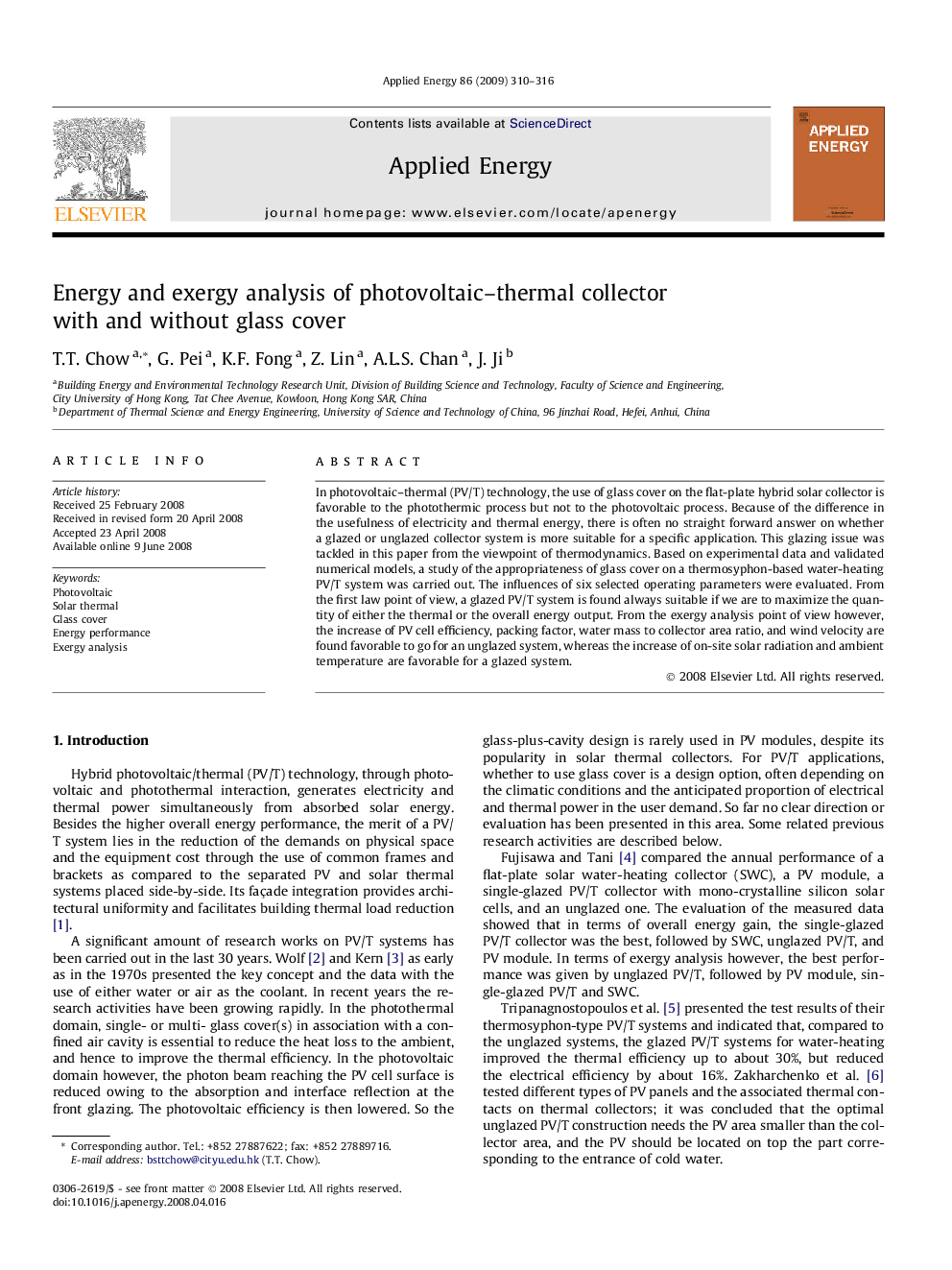| Article ID | Journal | Published Year | Pages | File Type |
|---|---|---|---|---|
| 245120 | Applied Energy | 2009 | 7 Pages |
In photovoltaic–thermal (PV/T) technology, the use of glass cover on the flat-plate hybrid solar collector is favorable to the photothermic process but not to the photovoltaic process. Because of the difference in the usefulness of electricity and thermal energy, there is often no straight forward answer on whether a glazed or unglazed collector system is more suitable for a specific application. This glazing issue was tackled in this paper from the viewpoint of thermodynamics. Based on experimental data and validated numerical models, a study of the appropriateness of glass cover on a thermosyphon-based water-heating PV/T system was carried out. The influences of six selected operating parameters were evaluated. From the first law point of view, a glazed PV/T system is found always suitable if we are to maximize the quantity of either the thermal or the overall energy output. From the exergy analysis point of view however, the increase of PV cell efficiency, packing factor, water mass to collector area ratio, and wind velocity are found favorable to go for an unglazed system, whereas the increase of on-site solar radiation and ambient temperature are favorable for a glazed system.
